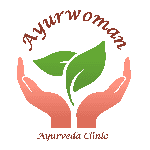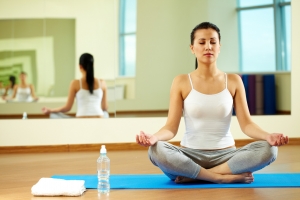Benefits of Yoga
Philosophy of yoga originated in India and has been around for thousands of years. It’s a workout that tones your muscles, improves flexibility, and can be very calming and relaxing. Yoga is a spiritual practice, not a religious practice. Yoga, in Sanskrit means “union”. It is the “union” of body, mind, and spirit.
The basic philosophy of yoga goes back to a Guru named Patanjali. He created the “eight limbs of yoga”, which don’t necessarily need to be followed, but if you want to deepen your practice this is a good guide.
Sutras (rules):
Yamas (restraints): nonviolence, truthfulness, non-stealing, and abstinence. Basically, don’t hurt other people or yourself. This is why so many yogis are vegan/vegetarian as well. However, you do not need to be vegan or vegetarian to practice yoga. Don’t lie, don’t steal, and don’t have sex. Wait, what?! Obviously in western society this one may or may not be taken seriously, and of course is something one can choose to follow or not.
Niyamas (disciplines): cleanliness, contentment, austerity, self-study, devotion to god. Keep yourself clean, your environment clean, eat clean, and try to think positively. Live in the present, and take the time to learn new things. Now devotion to god is a touchy subject like abstinence. If you are religious, keep doing what you’re doing, whether you worship Jesus, Shiva, Allah, etc. if you’re not religious, it simply means put your energy into loving yourself and others more. It’s open to interpretation. Worshiping anything or anyone is not necessary to your practice.
Asanas (physical postures): the actual poses in yoga. In the Yoga Sutras, Patanjali (a famous yogi) defines “asana” as “to be seated in a position that is firm, but relaxed”.
Pranayama (breath control): energy, life force, paying attention to how breath affects our bodies. The first step in pranayama is training us to use the entire range of our physical breathing apparatus. This means experiencing full yogic breathing—coordinating the lower, middle, and upper parts of the breath process—as well as learning to attenuate the outgoing breath. You can learn this type of breath from any qualified yoga instructor.
Pratyahara (withdrawal of the senses): to put it simply- put down your phone, turn off your computer- unplug! Focus completely on yourself and your breath.
Dharana (concentration): your movement, focusing on your breath, and thoughts while practicing. Translated as “collection or concentration of the mind (joined with the retention of breath)”, or “the act of holding, bearing, wearing, supporting, maintaining, retaining, keeping back (in remembrance), a good memory”, or “firmness, steadfastness, … , certainty”.
Dhyana (meditation): an important part of yoga. “A deeper awareness of oneness which is inclusive of perception of body, mind, senses and surroundings, yet remaining unidentified with it”.
Samadhi (liberation): balanced. In samādhi the mind and soul are in equal balance. The mind becomes still. It is a state of being totally aware of the present moment.
Some of these Sutras (or rules) are more intense than others. Not all of them need to be followed in order to practice yoga, but a general understanding of them may make your yoga classes or yoga practice sessions more enjoyable.
Different Types of Yoga
If you walk into a studio and find yourself surrounded by pregnant woman doing deep squats, and lots of deep breathing, it may be awkward. Especially if you are not a pregnant woman. It’s important to know the style of yoga class you’re attending. These are the most popular, but there are many more.
Hatha: a generic term used to describe any form of yoga that includes asanas (poses).
Vinyasa: a series of athletic poses combining movement with breath work, sometimes chanting is included in the practice. (Depends on the teacher and studio).
Bikram (hot): uses the same 26 posture series each time, but is done in a room at about 40°C.
Restorative: probably the most gentle yoga class you will ever take. It’s a lot of lying down and breathing, with very light, gentle stretches.
Prenatal: very similar to restorative, but with a focus on pregnancy/labour.
Anusara: geared toward heart-opening backbends, with a deep focus on postures.
Iyengar: poses are held longer than usual with a focus on alignment (great for yogi’s in teacher training)
Kundalini: mostly seated positions, with breathing techniques. Great for those that want to stimulate energy with breath, and focus on meditation. Lots of chanting (“OM”).
Power: postures that flow quickly. A vigorous workout that generates a lot of sweat, and physical release. Great for those that want to lose weight
Benefits of Yoga
- Releases stress
- Relaxes mind and body
- Leaner, stronger body (lose weight)
- Improves sex life- boosts confidence, energy, endurance.
- Improves focus
- If you’re getting serious about your practice, it can be a very positive spiritual journey
Yoga & Women’s Health
Some experts advise women to discontinue yoga (or any other physical exercise) while menstruating. However, you know your body best, and whatever you feel comfortable doing is what’s right for you.
Yoga’s Benefits for Women
- Relief from cramps. Helps with circulation and blood flow. Relieves bloating
- Relieving stress, and learning to focus your thoughts, you can learn to balance those pesky mood swings!
- Menopause: PMS times ten- all the more reason to do yoga! With hot flashes, try more restorative poses, or poses accompanied with a bolster/block for support in order to not strain yourself and create too much heat.
- Pregnancy/labour: better leg circulation, opening hips (labour), breathing (labour), relieve back pain.
- Postnatal: great abdominal workout. Helps bring those stomach muscles back together, and gets rid of that extra tummy fat. Kegel exercises help strengthen those uterine muscles! Lots of poses can involve lifting baby, holding baby, or allow for fun interaction while you workout.
Yoga Etiquette
Besides the philosophy of yoga, one thing that isn’t taught very often is yoga etiquette. What to do / not to do during a yoga class. Here are 10 tips:
- Never, ever walk on someone else’s mat! Think of the mat as a personal space. Also, no one wants your bare feet where his or her face might be.
- Don’t be overly chatty. However depends on the studio, and size of the class. But you should not be talking to other students or the instructor when class has begun, or during class (unless it is an emergency)
- If you have any injuries, tell the instructor before class so he/she may offer alternatives to certain poses during class
- Take your shoes and socks off at the door. People practice yoga barefoot, so socks and shoes should be kept at the back of the studio, or near the entrance.
- Don’t sit too close to someone else. You should be able to turn in a full circle with arms out and not knock into anyone else.
- Save questions for the instructor after class. Nobody likes a class “teacher hog” when they are supposed to be learning.
- Thank the instructor for teaching your class. If this means saying “Namaste”, or “thank you”, say it. They will appreciate it.
- Come to class clean if you can (especially your feet!)
- Wear comfortable clothing
- Eat light before class, or if you can, nothing at all. Practicing yoga on a full stomach will not feel good, and may make you gassy (which benefits no one!)


